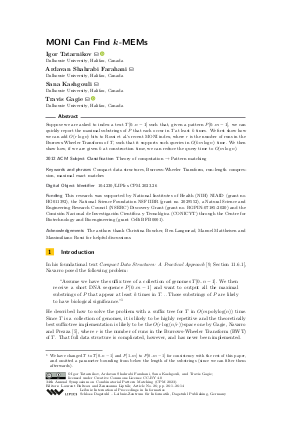LIPIcs.CPM.2023.26.pdf
- Filesize: 0.68 MB
- 14 pages

 Creative Commons Attribution 4.0 International license
Creative Commons Attribution 4.0 International license












Feedback for Dagstuhl Publishing